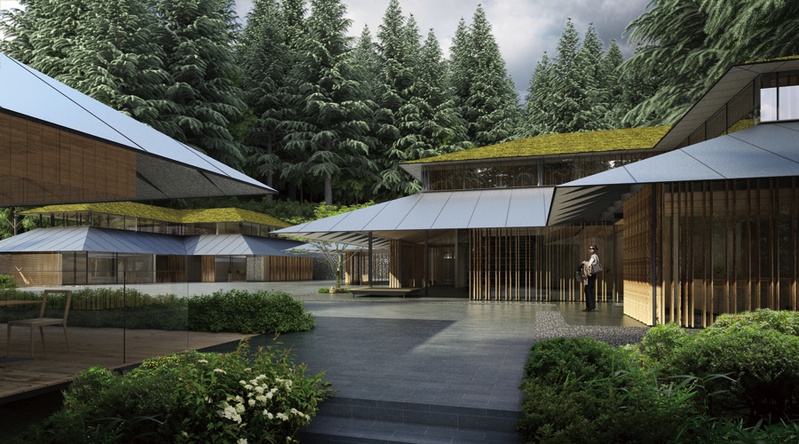The forest park that spreads out to the west of Portland offers a quiet natural area at a moderate distance from the city center. The Portland Japanese Garden features five garden elements in the nature of the Northwest. With an excellent balance of location and scenery, it is one of the city's famous sites, attracting 350,000 visitors a year. Currently, a new project is underway to build a cultural facility called "Cultural Crossing," and it is increasing its presence as a place to disseminate Japanese culture.
Construction of the Portland Japanese Garden began in 1963, when Portland and Sapporo became sister cities. It was designed by Professor Takuma Tono of Tokyo University of Agriculture. Although it is a small space of 5.5 acres, it takes advantage of the sloping landscape to incorporate five elements of Japanese gardens: a flat garden, a rock garden, a tea garden, a strolling pond garden, and a natural garden.
Sadafumi Uchiyama, head of the Japanese garden culture and technology department at the garden, said, "The Japanese garden is located in the nature of the Northwest. The surrounding trees have been left as they are, without being cut down." It is close to the city center and is blessed with a variety of natural landscapes, which is said to be making it popular.
The garden took a major step towards its current form in 2005. Since taking over as CEO, Steve Bloom has focused on activities such as promoting Japanese culture and collaborating with the local community in order to ensure the garden's continued existence. This has resulted in the number of visitors tripling over the past 10 years.
The number of employees changes with the season, but there are always more than 50 people, a significant increase from 15 in 2005. Uchiyama took up the post as the ninth superintendent in 2008, and is responsible for the garden's landscape.
"The garden was originally a great way to teach and promote Japanese culture to the general public," Bloom said. Currently, the garden is able to operate with membership and admission fees.
Additionally, a series of outreach activities to the local community, Japan and other countries have been of great help to the ongoing facility expansion plans.
The Cultural Crossing project, a major cultural facility with a budget of $33 million, has received a great deal of support not only from the local area, but also from Japan and around the world. As of March, donations had totaled about $24 million.
The facility was designed by architect Kengo Kuma, who recently gave a lecture at the University of Washington. Junnori Awata, a master of Anō-zukuri stonework, who demonstrated his stone wall-building skills at the local Kubota Garden in the summer of 2014, is also participating in the project by building a 20-foot stone wall. According to Director Uchiyama, the main theme of the project is the exploration of Japanese culture. The new facility will focus on programs that teach the "foundations" of Japanese culture, rather than the "shape" or "form."
During the Meiji era, Japanese gardens were used by Japan to introduce the country at overseas expositions and other events. Later, even as international relations deteriorated, Japanese gardens continued to exist, and with the boom in sister city affiliations between Japan and the United States from the 1960s onwards, Japanese gardens became a key to friendly relations, and their construction was promoted all over the country.
In Minnedoka, Idaho, which was used as an internment camp for Japanese Americans during World War II, inmates also built a Japanese garden.
Chief Director Uchiyama points out that "Japanese gardens are not just beautiful, but there must have been strong reasons why people desire them throughout history. I think that people can sense something universal that can be shared by many different people."
The facility is scheduled for completion in the spring of next year, and the gardens are expected to attract 500,000 visitors per year.
According to Bloom, there are about 300 Japanese gardens built to commemorate sister city relationships between the 1960s and 1980s. However, many of them have problems with future finances and management plans. Another major issue is training gardeners, so the new facility is also planned as a Japanese garden training center in North America.
Bloom said, "The garden is now known as one of the most beautiful traditional Japanese gardens in the world. Our next goal is to bring it on par with the finest gardens from around the world."
For more information about the Portland Japanese Garden, please visit http://japanesegarden.com .
© 2016 The North American Post






